- Local Time: 10:32 PM
- Weather: 13 ℃ / 56 ℉
Discover the enchanting world of ancient Egyptian toys, including dolls, board games, and movable figurines. Uncover how these playful artifacts educated children, mirrored cultural values, and intertwined leisure with societal roles in one of history’s most remarkable civilizations.
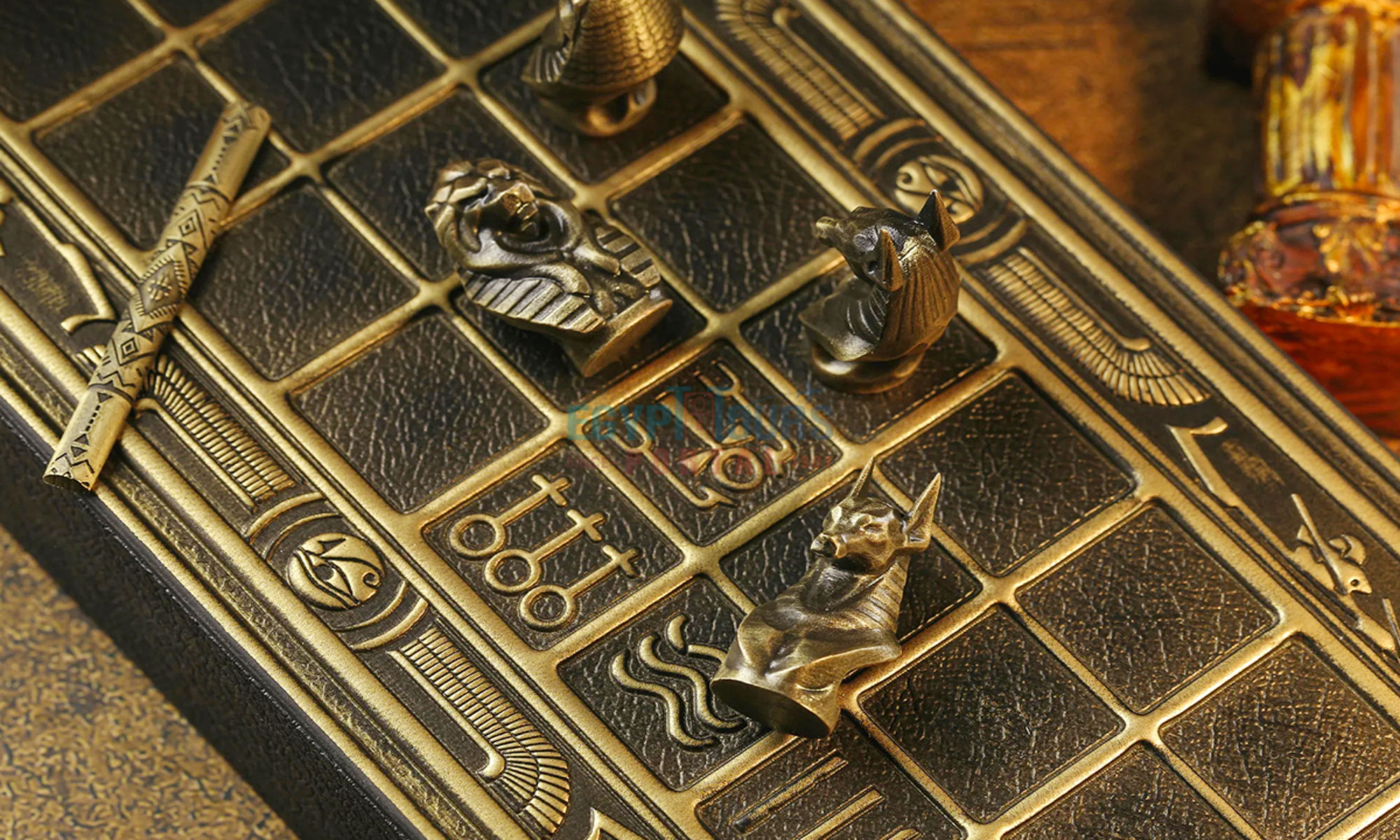
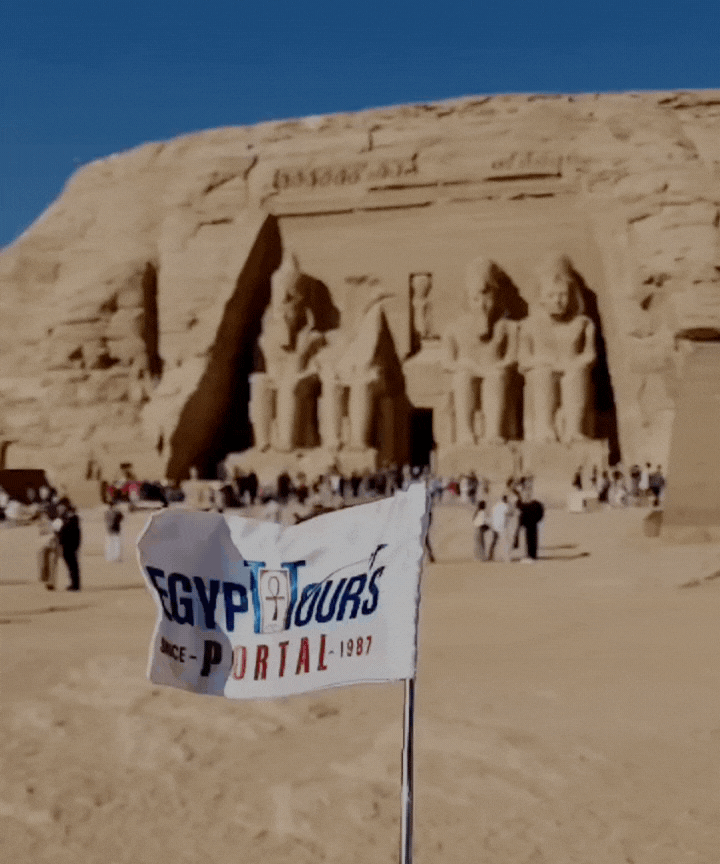
The ancient Egyptian toys offer a fascinating glimpse into the lives of Egypt's youngest inhabitants. Far more than simple playthings, these objects reveal the ingenuity, creativity, and cultural values of the time. From dolls fashioned with real hair to intricately carved board games like Senet, toys were a blend of entertainment and education, preparing children for their future roles in society. Crafted from materials like clay, wood, and even ivory, these artifacts also reflect the craftsmanship and artistry of ancient toymakers.
Whether symbolizing fertility, mimicking adult responsibilities, or fostering strategic thinking, toys were deeply intertwined with the everyday life and beliefs of the Ancient Egyptians. This article explores the diverse world of Ancient Egyptian toys, examining their function, craftsmanship, and cultural significance, and sheds light on how the simple joys of play connect us across millennia.

Toys in Ancient Egypt were far more than simple distractions; they were essential tools for education, creativity, and socialization. As early as 3000 BCE, toys mirrored the roles and responsibilities children would eventually assume as adults, helping them develop practical skills. For example, the grinder doll, a movable toy that imitated grain milling, taught children about one of the most vital processes in Egypt’s agrarian society. These toys often incorporated realistic details, such as the scraping motion needed to crush grain, emphasizing both play and skill-building.
Wooden animal figurines, including cattle, sheep, and horses, encouraged children to learn about livestock care, a cornerstone of Egypt’s economy. Toys like miniature boats, found in tombs dating to Egypt's Middle Kingdom (c. 2040–1782 BCE), may have introduced children to the importance of the Nile for transportation and trade. These practical toys provided a hands-on education in a society where formal schooling was rare, especially for those outside the elite classes.
Furthermore, toys were often infused with cultural significance. Animal figurines, such as crocodiles or lions, reflected the religious and natural world of Ancient Egypt. These playthings introduced children to the myths, values, and rituals that defined their civilization, blending fun with function and laying the groundwork for their future societal roles.
Explore more intriguing details about the games and entertainment of the Ancient Egyptians.
Read More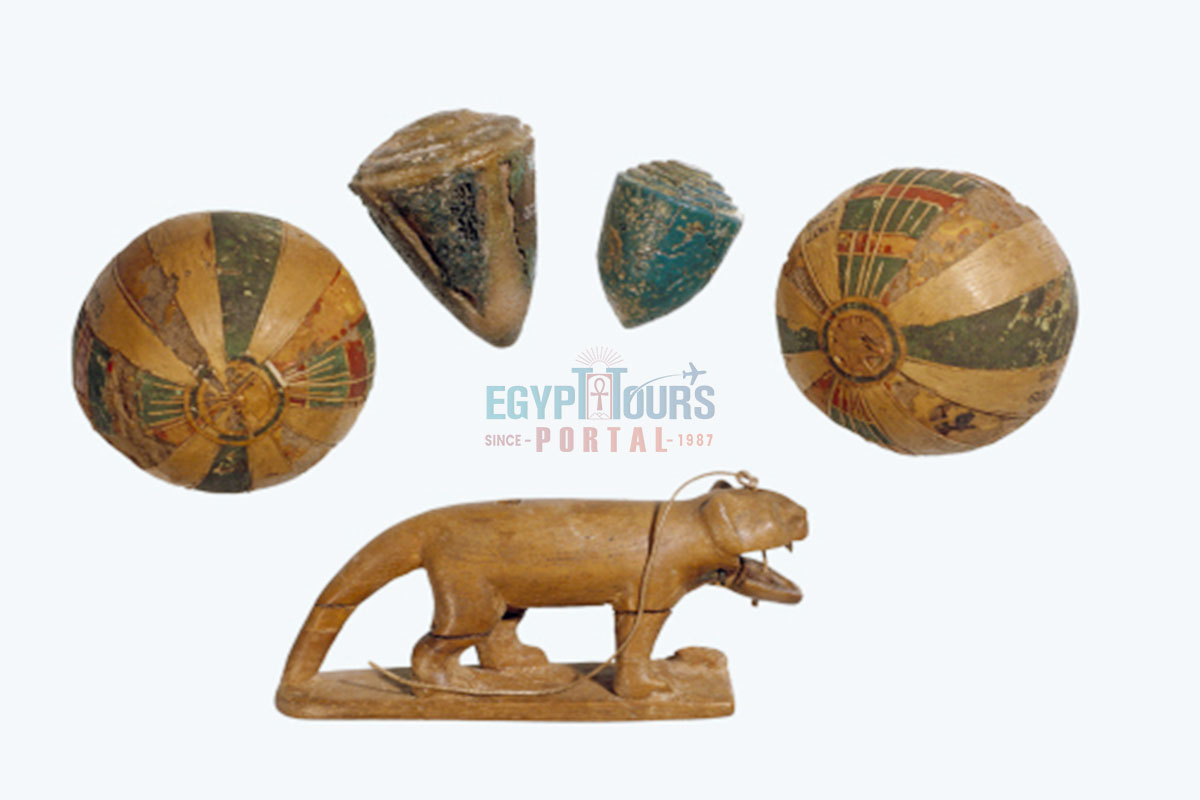
The discovery of ancient toys, some dating back to the Old Kingdom of Ancient Egypt (c. 2686–2181 BCE), reveals a thriving culture of childhood play. Dolls were among the most popular toys, made from materials such as wood, clay, and fabric. A famous rag doll from Hawara, now in a fragile state, was crafted with real hair and is believed to date to the Middle Kingdom (c. 2040–1782 BCE). These dolls sometimes came with accessories, allowing children to role-play activities like parenting or household management.
Spinning tops, typically carved from painted wood or stone, were common and enjoyed by children of all social classes. Balls, made from leather or woven papyrus stuffed with straw or horsehair, were used in various games, including juggling and team sports that resembled modern-day handball or soccer. These toys date back to at least 2000 BCE and were often depicted in tomb murals.
Board games like Senet, which emerged around 2600 BCE, were another popular pastime. Though primarily associated with adults, children also played these games, honing their strategic thinking and problem-solving skills. Similarly, marble, made from polished stones or clay, appeared around 2000 BCE, offering a simple yet engaging form of entertainment.
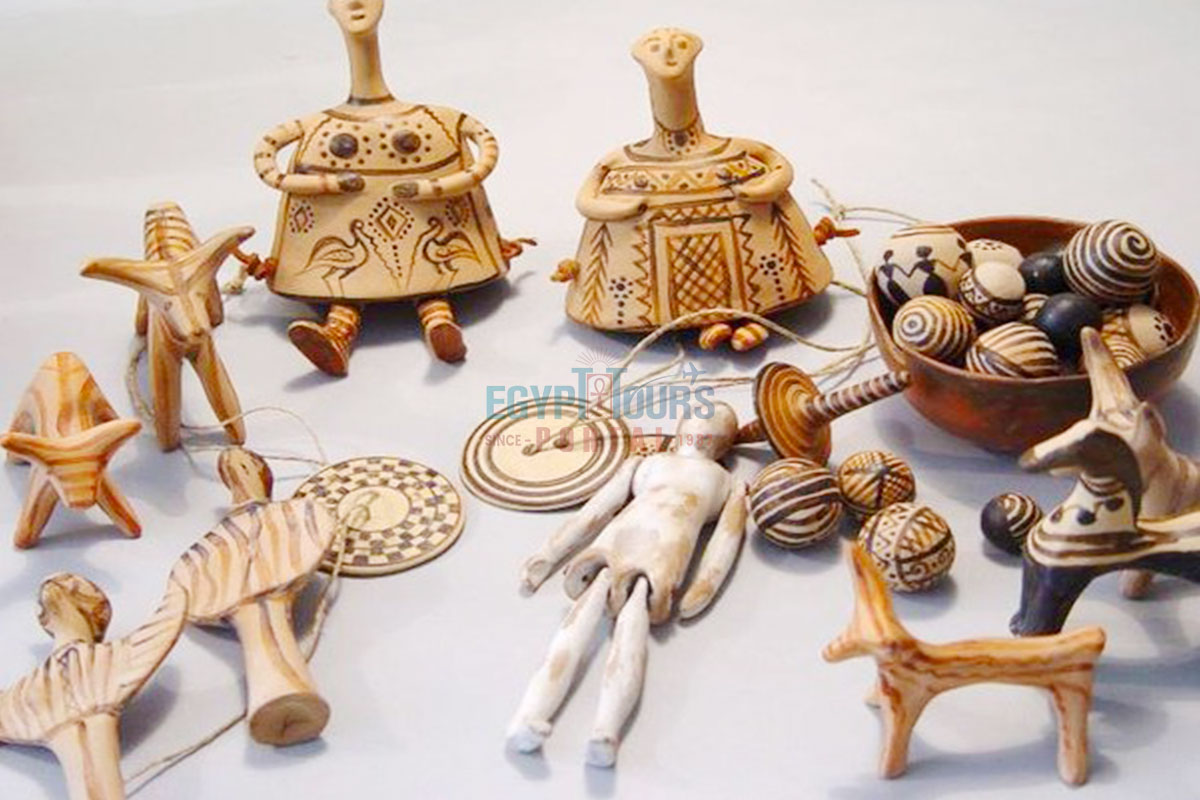
Toys were integral to the physical, mental, and social development of children in Ancient Egypt. Physical toys, such as balls and spinning tops, promote motor skills and coordination. Social games, like wrestling and team sports, cultivated cooperation, leadership, and competitive spirit. These activities were often depicted in the New Kingdom of Ancient Egypt (1550–1070 BCE) tomb murals, showcasing the importance of communal play.
Dolls and animal figurines allowed for imaginative role-playing, helping children develop problem-solving skills and emotional intelligence. For example, a child might use a movable toy crocodile to simulate real-life scenarios involving riverine dangers or hunting. By mimicking adult roles, children learn about their societal and familial expectations.
Group activities, such as ball games or mock battles, not only provided entertainment but also prepared boys for physical labor or military service. Meanwhile, girls often engaged with dolls or miniature domestic tools, reflecting their expected contributions to household life. These toys ensured that playtime was both fun and an early form of education.
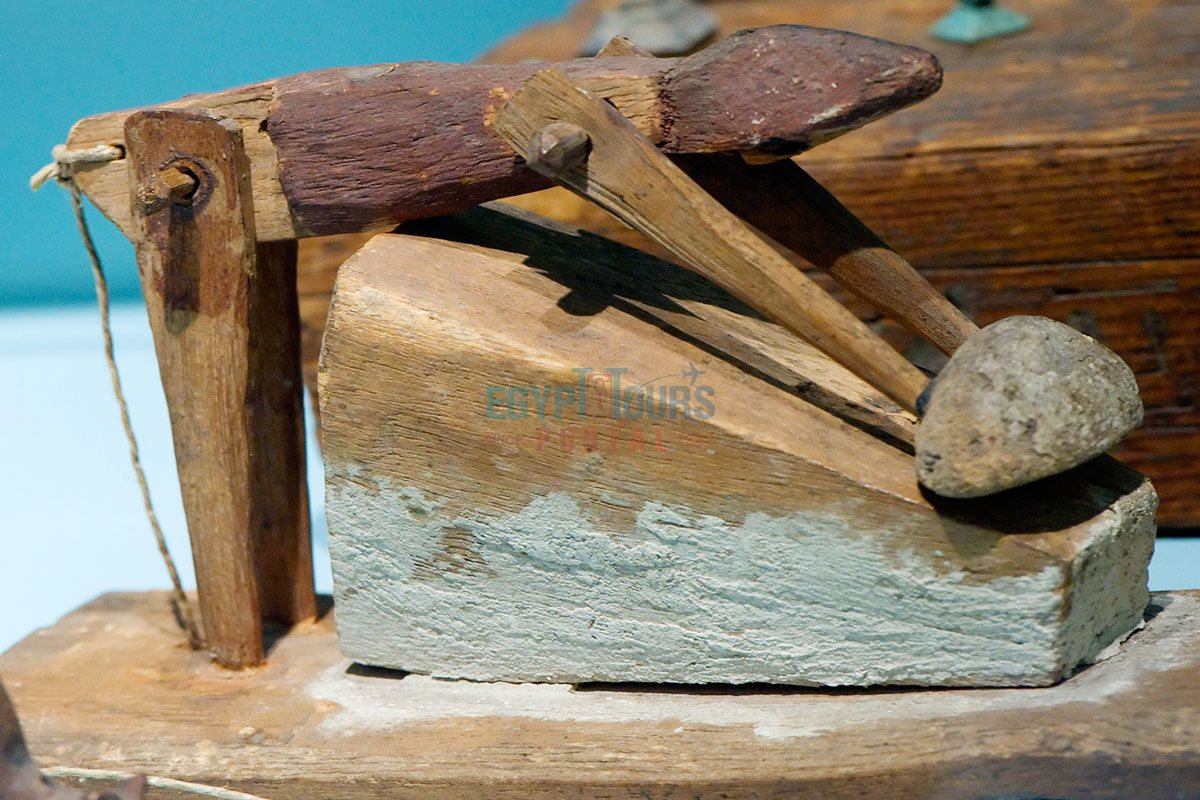
The craftsmanship of Ancient Egyptian toys reveals the skill and creativity of artisans who worked with a variety of materials. Toys were crafted from clay, wood, papyrus, ivory, and stone, often chosen based on availability and the social status of the child’s family. For example, clay figurines were common among lower-class families, while ivory dolls or wooden animal toys inlaid with gold and faience were reserved for the elite.
Movable toys, such as wooden crocodiles with snapping jaws or miniature figures with articulated limbs, demonstrate the ingenuity of ancient toymakers. These toys often utilized strings or pivoting joints to create interactive elements. The complexity of these designs, such as the movable lion figurines found in tombs, reflects both craftsmanship and a desire to engage children’s imaginations.
Infant toys, such as rattles, were made from hollow clay or wood filled with small beads or pebbles to produce noise. These toys date back to around 1500 BCE and were likely used not only for play but also for their believed protective properties, warding off evil spirits. The Senet boards buried with King Tutankhamun (c. 1323 BCE) were intricately carved from ebony and ivory, further illustrating the cultural and aesthetic value placed on toys.
Examine more mesmerizing details about the skill and imagination of the Egyptian Craftsmen.
Read More
Board games were deeply embedded in the leisure culture of Ancient Egypt, and enjoyed by both children and adults. Senet, one of the earliest known board games, dates back to the Predynastic Period (c. 3100 BCE). Its rectangular board featured three rows of ten squares, some marked with symbols of good or bad fortune. Beyond its entertainment value, Senet carried spiritual significance, symbolizing the journey to the afterlife. The inclusion of four Senet boards in King Tutankhamun’s tomb underscores its dual role as a pastime and a ritual object.
Mehen, another popular game from around 3000 BCE, featured a coiled snake-shaped board divided into rectangular spaces. Pieces often included marble or animal-shaped figurines, such as lions. Though the exact rules remain unknown, the game likely involved both strategy and chance.
The Hounds and Jackals game, also known as 58 Holes, dates to around 2000 BCE and involves navigating pegs shaped like animal heads through a maze of holes. This game, found in elite tombs, emphasizes the importance of games in both life and death.
These board games provided mental stimulation, teaching children about strategic thinking and planning, while also serving as social tools for bonding within families. They highlight the universality of games in bridging age, class, and even spiritual realms in Ancient Egyptian society.
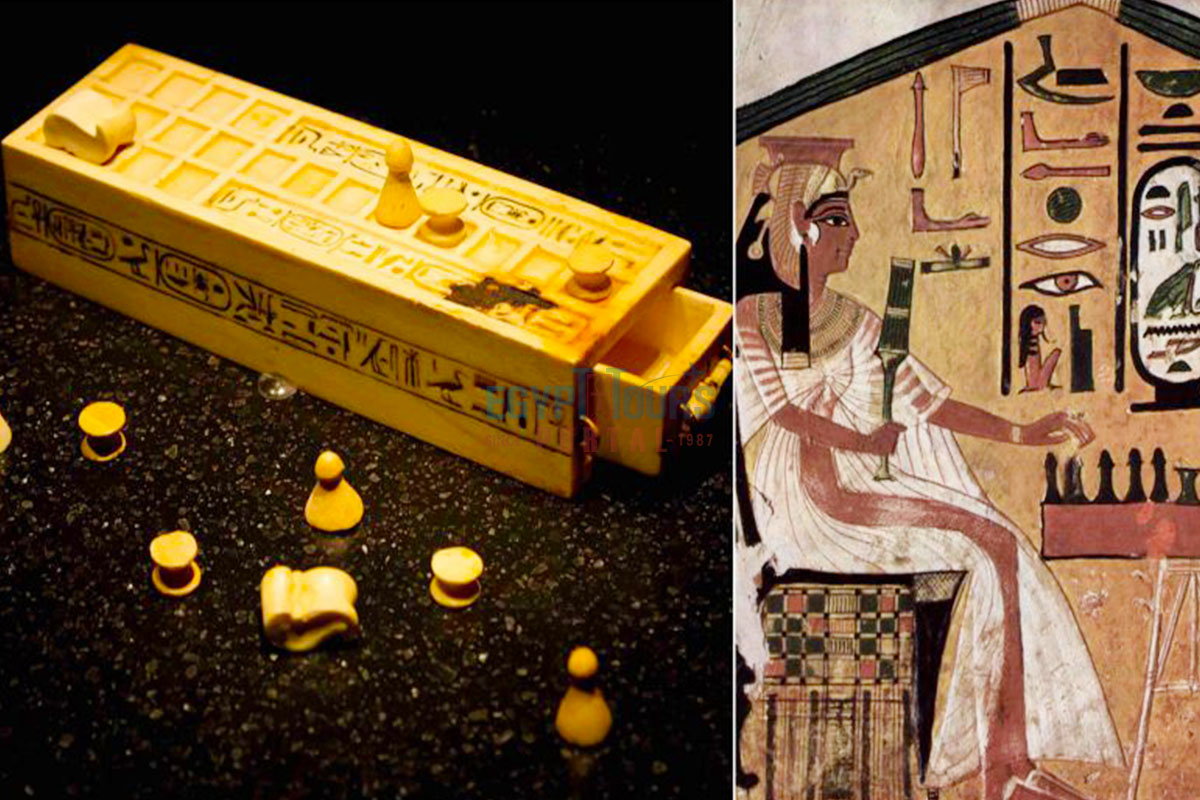
Children of the Pharaohs and nobility in Ancient Egypt had access to toys that were not only extravagant but also symbolic of their privileged status and future responsibilities. These toys, crafted from luxurious materials such as gold, ebony, ivory, and semi-precious stones, highlighted the wealth and influence of their families. Miniature chariots, symbolic of military power, were intricately designed, while dolls were dressed in fine fabrics and adorned with accessories that mirrored the fashion of the elite.
One remarkable example is a golden toy horse with movable parts, dated to the Late Period (c. 664–332 BCE), showcasing both the opulence and engineering skills of ancient artisans. Board games like Senet and Mehen, found in the tombs of royalty such as King Tutankhamun, were crafted from materials like lapis lazuli, ebony, and faience. These games served both as entertainment and as spiritual tools for navigating the afterlife. Additionally, elaborate animal figurines, including crocodiles with snapping jaws or lions with moving limbs, were not only toys but also reflected Egypt’s religious reverence for animals.
These luxury toys served a dual purpose: they entertained while instilling values of leadership, spirituality, and cultural refinement, preparing elite children for their future roles as rulers or high-ranking officials.

Toys in Ancient Egypt often carried meanings, much like Ancient Egyptian Symbols that transcended their role as playthings, reflecting the society’s values, beliefs, and way of life. Dolls, for instance, were more than children’s companions. Some were associated with fertility and family life, emphasizing the cultural importance of lineage and reproduction. The design of many dolls, often with exaggerated hips and symbolic jewelry, reflects their potential dual role as ritualistic or educational tools.
Animal figurines were ubiquitous and reflected Egypt’s reliance on agriculture and its reverence for nature. Cattle figurines symbolized wealth and sustenance, while crocodile and lion toys represented power and protection, tying in with religious associations to the Gods & Goddesses of Ancient Egypt like Sobek and Sekhmet. Board games such as Senet and Hounds and Jackals served both as recreational activities and symbolic representations of the journey through life and into the Ancient Egyptian Afterlife.
Even toys for infants, such as rattles and noise-makers, were thought to ward off evil spirits, blending play with spiritual protection. The cultural significance of these toys illustrates how deeply intertwined daily life, religion, and education were in Ancient Egyptian society.
Explore more magnificent details about the rituals, beliefs, and customs of the religion of the ancient Egyptians.
Read More
The toys and games children played were often influenced by societal expectations for their gender roles. Girls typically played with dolls and miniature tools related to domestic life, such as tiny cooking sets or weaving looms, reflecting their preparation for future household responsibilities. Boys, on the other hand, gravitated toward toys that emphasized strength, skill, and leadership, such as toy weapons, slingshots, and models of chariots.
Murals from Ancient Egyptian Tombs, such as those of the Old and Middle Kingdoms, depict boys engaging in physical activities like wrestling, swimming, and mock battles, preparing them for roles as warriors or workers. However, some toys, such as balls, spinning tops, and board games like Senet, were enjoyed by both genders, emphasizing shared aspects of childhood leisure.
The diversity of toys and their gender-specific roles reflect the societal structure of Ancient Egypt, where play was both a source of joy and an early introduction to adult responsibilities.

Toys in Ancient Egypt were carefully designed to bridge the gap between childhood and adulthood, functioning as tools for learning and skill-building. Miniature tools and figurines often depicted daily activities such as farming, fishing, or grinding grain, allowing children to practice these tasks playfully. For example, a grain grinder toy, dating to the Middle Kingdom (c. 2040–1782 BCE), mimicked the process of milling flour, an essential skill in Egypt’s agrarian economy.
Animal figurines helped children understand livestock care, a cornerstone of Egyptian agriculture. Meanwhile, games like Senet encouraged strategic thinking and decision-making, preparing children for leadership roles. Toys like miniature ships allowed children to role-play Egypt’s vital trade and transportation activities, fostering a sense of the broader economy they would one day contribute to.
Through these toys, children were subtly taught the skills and values they would need to succeed in adult life, ensuring continuity in a society deeply reliant on tradition and labor specialization.
Explore more intriguing facts about the daily routines, beliefs, and traditions of the Egyptians.
Read More
Ancient Egyptian toys and games left an indelible mark on the development of recreational and educational objects in later cultures, particularly in the Mediterranean. The concept of board games, as exemplified by Senet and Mehen, influenced similar games in Mesopotamia, Greece, and Rome. For instance, the Royal Game of Ur in Mesopotamia and Petteia in Greece share strategic elements and symbolic undertones with these Egyptian games.
Dice, used for chance-based games, evolved into staples of Roman and medieval gaming culture, while movable figurines inspired later mechanical toys in Europe and Asia. The craftsmanship of animal toys, such as crocodiles with snapping jaws or lions with moving parts, set a precedent for interactive play objects that persists today.
Even the educational aspect of toys, such as miniature tools for skill-building, influenced how toys were designed in other ancient societies, emphasizing their role in preparing children for adult responsibilities. The enduring appeal of Ancient Egyptian toys reminds us of their innovation and the universal importance of play across cultures and eras.
Ancient Egyptian toys were more than simple playthings; they were tools of education, socialization, and cultural expression. Through their intricate craftsmanship and multifunctional roles, these toys prepared children for adult responsibilities, reflected societal values, and provided entertainment across social classes.
Whether through dolls, board games, or movable animal figurines, the toys of Ancient Egypt reveal a civilization deeply invested in the joy of play and its power to connect generations, teach skills, and reinforce cultural and spiritual beliefs. The majestic treasures of Egypt will be explored by all, revealing all the epic and beautiful tales of the immortal civilization of Egypt. Book our majestic Nile Cruise or one of our epic Egypt holidays from Ireland in order to experience and thrill and fun of a lifetime.
Private 4 Days Cairo Tour Packages for Irish Travelers 4 days Cairo Egypt Tour packa...
Tour Location: Cairo – Giza...
5 Days Cairo and Alexandria Tour Package For Irish Travelers 5 days Cairo and Alexan...
Tour Location: Cairo/Giza/Alexandria...
6 Days Cairo, Luxor & Aswan Tour Package For Irish Travelers 6 days Cairo, Luxor...
Tour Location: Cairo/Giza/Aswan/Luxor...
Amazing 7 Days Cairo and Hurghada Holiday for Irish Travelers 7 Days Cairo & Hur...
Tour Location: Cairo – Giza – Hurgh...
Children in Ancient Egypt played with dolls, wooden animals, spinning tops, balls, marbles, and board games like Senet and Hounds and Jackals.
Toys were often made from wood, clay, ivory, stone, leather, and papyrus. Dolls were typically made from wood or clay, while games like Senet were crafted from wood or bone.
Toys were not only for entertainment but also for education. They helped children learn about adult responsibilities, such as fishing or managing animals and developed skills like strategy and coordination.
Some toys, like board games, had symbolic connections to religion. For example, Senet was thought to represent the journey of the soul in the afterlife and had spiritual significance.
The most popular board games were Senet, a game of strategy, and Hounds and Jackals, another game that involved a grid and pieces.
No, toys were used by children from all social classes. While wealthier children had more elaborately crafted toys, simpler versions were available for children from lower classes as well.
Dolls were often dressed in linen and used for imaginative play. They could be used to mimic adult roles, like caring for children or running a household.
Toys reflected the social roles and everyday life of Ancient Egyptians. For example, toys like fishing rods or marbles mirrored activities and games that were common in society.
Many toys, especially small models of animals or fishing tools, served as early lessons in adult responsibilities, such as caring for livestock or fishing.
While many toys were gender-neutral, dolls and kitchen-related toys were primarily used by girls, while boys often played with toys like marbles, spinning tops, and models of tools or animals.
The entire country of Egypt deserve to be explored with its every heavenly detail but there are places that must be seen before any other such as the breathtaking Hurghada's red sea, The wonders of Cairo the pyramids of Giza, the great sphinx, the Egyptian Museum, Khan El Khalili Bazaar, the wonders of Luxor like Valley of the Kings, Karnak & Hatshepsut temple and the wonders of Aswan such as Abu Simbel temples, Philea temple, Unfinished obelisk and The Wonders of Alexandria like Qaitbat Citadel, Pompey's Pillar and Alexandria Library. Read more about the best places to visit in Egypt.
If you want to apply for a Visa On Arrival that lasts for 30 days then you should be one of the eligible countries, have a valid passport with at least 6 months remaining and pay 25$ USD in cash, as for the E-Visa for 30 day you should have a valid passport for at least 8 months, complete the online application, pay the e-visa fee then print the e-visa to later be presented to the airport border guard. You could also be one of the lucky ones who can obtain a free visa for 90 days. Read more about Egypt travel visa.
Egypt has a variety of delicious cuisines but we recommend “Ful & Ta’meya (Fava Beans and Falafel)”, Mulukhiya, “Koshary”, a traditional Egyptian pasta dish, and Kebab & Kofta, the Egyptian traditional meat dish.
The best time to travel to Egypt is during the winter from September to April as the climate becomes a little tropical accompanied by a magical atmosphere of warm weather with a winter breeze. You will be notified in the week of your trip if the Climate is unsafe and if any changes have been made.
You should pack everything you could ever need in a small bag so you could move easily between your destinations.
We have been creating the finest vacations for more than 20 years around the most majestic destinations in Egypt. Our staff consists of the best operators, guides and drivers who dedicate all of their time & effort to make you have the perfect vacation. All of our tours are customized by Travel, Financial & Time consultants to fit your every possible need during your vacation. It doesn't go without saying that your safety and comfort are our main priority and all of our resources will be directed to provide the finest atmosphere until you return home.
You will feel safe in Egypt as the current atmosphere of the country is quite peaceful after the government took powerful measures like restructuring the entire tourist police to include all the important and tourist attractions in Egypt. Read more about is it safe to travel to Egypt.
Wear whatever feels right and comfortable. It is advised to wear something light and comfortable footwear like a closed-toe shoe to sustain the terrain of Egypt. Put on sun block during your time in Egypt in the summer to protect yourself from the sun.
The best activity is by far boarding a Nile Cruise between Luxor and Aswan or Vise Versa. Witness the beauty of Egypt from a hot balloon or a plane and try all the delicious Egyptian cuisines and drinks plus shopping in old Cairo. Explore the allure and wonders of the red sea in the magical city resorts of Egypt like Hurghada and many more by diving and snorkeling in the marine life or Hurghada. Behold the mesmerizing western desert by a safari trip under the heavenly Egyptian skies.
There are a lot of public holidays in Egypt too many to count either religious or nation, the most important festivals are the holy month of Ramadan which ends with Eid Al Fitr, Christmas and new years eve. Read more about festivals & publich holidays in Egypt.
Egypt is considered to be one of the most liberal Islamic countries but it has become a little bit conservative in the last couple of decades so it is advised to avoid showing your chest, shoulders or legs below the knees.
Arabic is the official language and Most Egyptians, who live in the cities, speak or understand English or at least some English words or phrases. Fewer Egyptians can speak French, Italian, Spanish, and German. Professional tour guides, who work in the tourism sector, are equipped to handle visitors who cannot speak Arabic and they will speak enough English and other languages to fulfill the needs of all our clients.
The fastest way is a car, of course, a taxi. If you are in Cairo ride a white taxi to move faster or you could board the fastest way of transportation in Egypt metro if the roads are in rush hour.
The temperature in Egypt ranges from 37c to 14 c. Summer in Egypt is somehow hot but sometimes it becomes cold at night and winter is cool and mild. The average of low temperatures vary from 9.5 °C in the wintertime to 23 °C in the summertime and the average high temperatures vary from 17 °C in the wintertime to 32 °C in the summertime. The temperature is moderate all along the coasts.
It is the home of everything a traveler might be looking for from amazing historical sites dating to more than 4000 years to enchanting city resorts & beaches. You will live the vacation you deserve as Egypt has everything you could possibly imagine.









